Презентация Week 7 Lecture 1amp 2 New movements
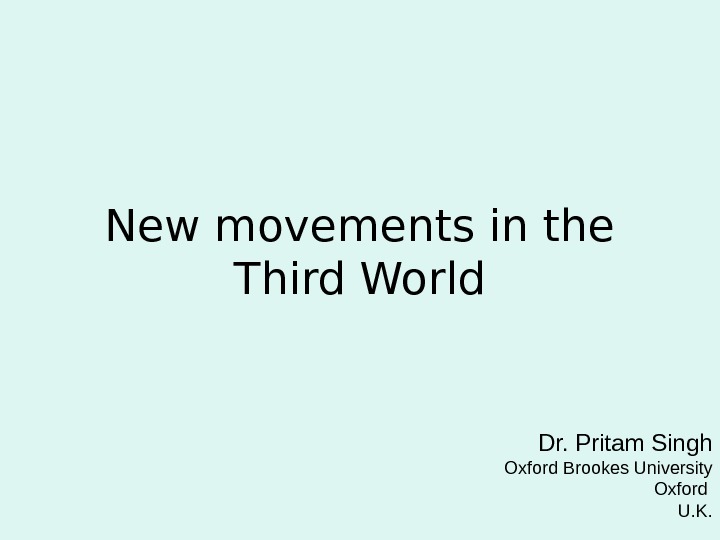
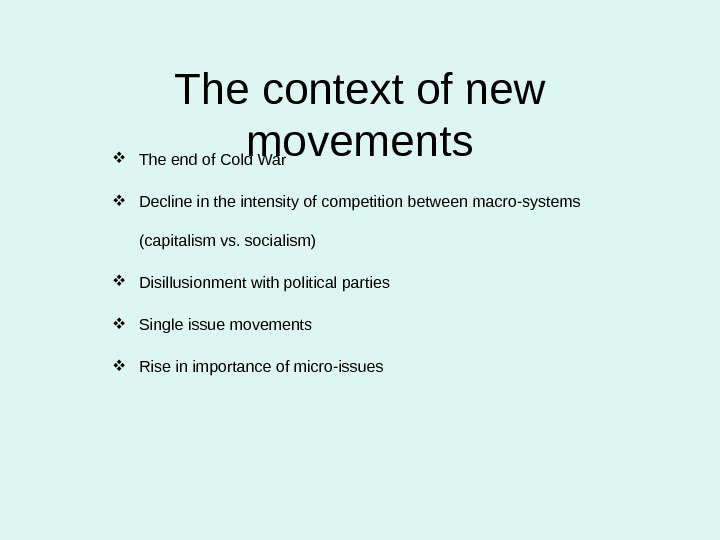
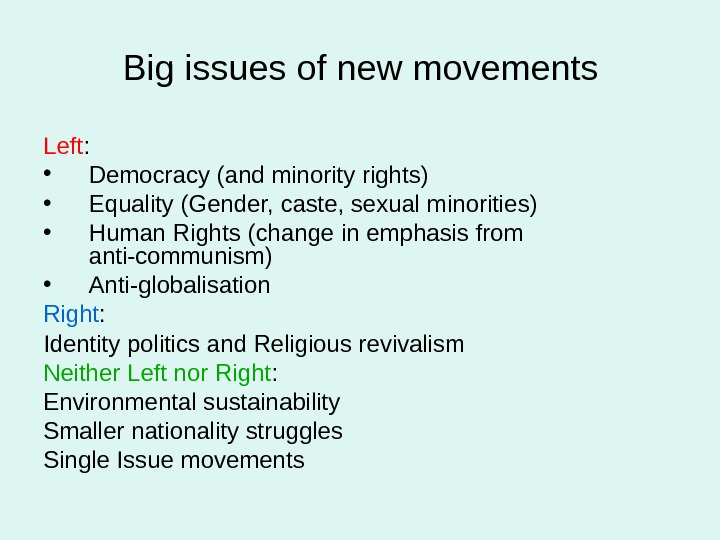
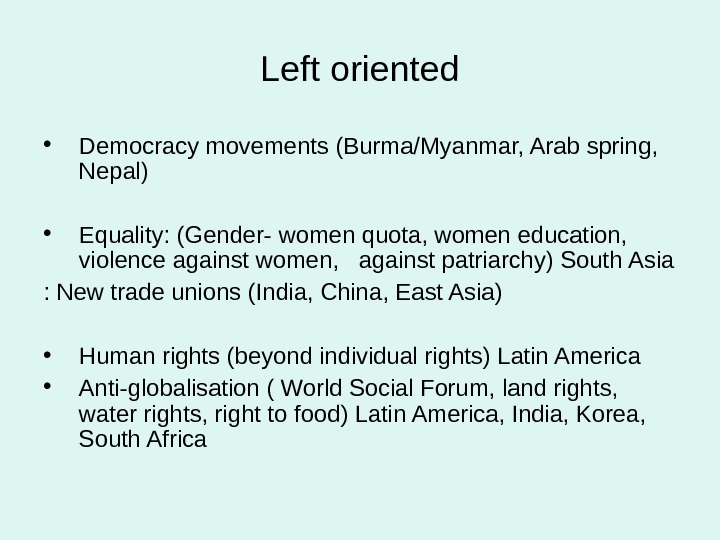

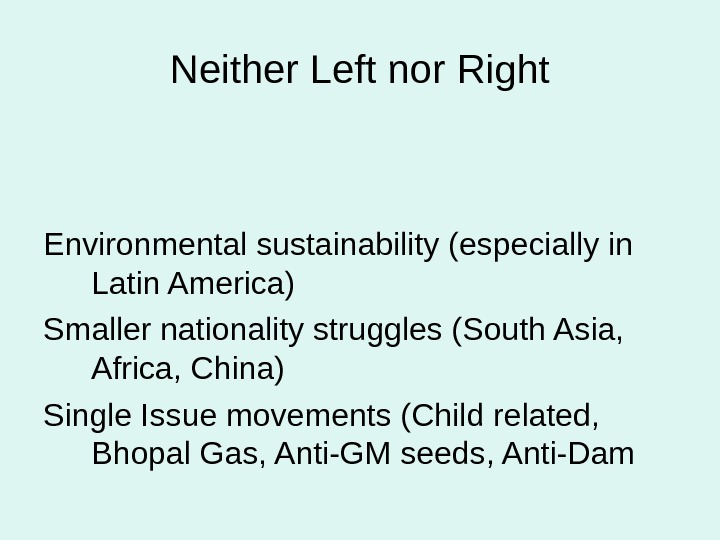
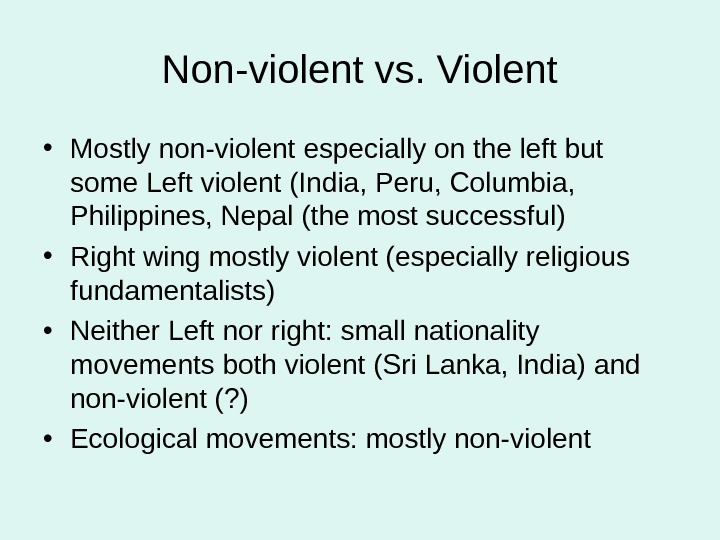
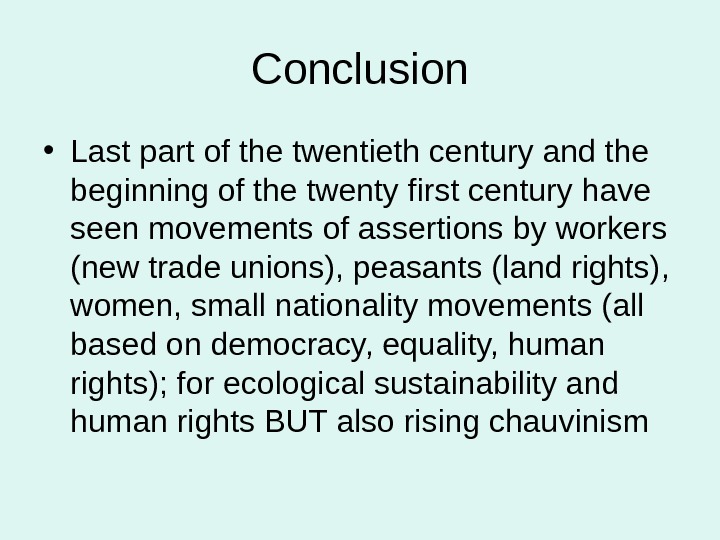
- Размер: 63.5 Кб
- Количество слайдов: 8
Описание презентации Презентация Week 7 Lecture 1amp 2 New movements по слайдам
 New movements in the Third World Dr. Pritam Singh Oxford Brookes University Oxford U. K.
New movements in the Third World Dr. Pritam Singh Oxford Brookes University Oxford U. K.
 The context of new movements The end of Cold War Decline in the intensity of competition between macro-systems (capitalism vs. socialism) Disillusionment with political parties Single issue movements Rise in importance of micro-issues
The context of new movements The end of Cold War Decline in the intensity of competition between macro-systems (capitalism vs. socialism) Disillusionment with political parties Single issue movements Rise in importance of micro-issues
 Big issues of new movements Left : • Democracy (and minority rights) • Equality (Gender, caste, sexual minorities) • Human Rights (change in emphasis from anti-communism) • Anti-globalisation Right : Identity politics and Religious revivalism Neither Left nor Right : Environmental sustainability Smaller nationality struggles Single Issue movements
Big issues of new movements Left : • Democracy (and minority rights) • Equality (Gender, caste, sexual minorities) • Human Rights (change in emphasis from anti-communism) • Anti-globalisation Right : Identity politics and Religious revivalism Neither Left nor Right : Environmental sustainability Smaller nationality struggles Single Issue movements
 Left oriented • Democracy movements (Burma/Myanmar, Arab spring, Nepal) • Equality: (Gender- women quota, women education, violence against women, against patriarchy) South Asia : New trade unions (India, China, East Asia) • Human rights (beyond individual rights) Latin America • Anti-globalisation ( World Social Forum, land rights, water rights, right to food) Latin America, India, Korea, South Africa
Left oriented • Democracy movements (Burma/Myanmar, Arab spring, Nepal) • Equality: (Gender- women quota, women education, violence against women, against patriarchy) South Asia : New trade unions (India, China, East Asia) • Human rights (beyond individual rights) Latin America • Anti-globalisation ( World Social Forum, land rights, water rights, right to food) Latin America, India, Korea, South Africa
 Right wing movements 1. Ethnic chauvinism (Africa, Sri Lanka) (anti-minority) 2. Religious revivalism (Two facets): (i) Humanitarian (ii) Sectarian and authoritarian (even terroristic)
Right wing movements 1. Ethnic chauvinism (Africa, Sri Lanka) (anti-minority) 2. Religious revivalism (Two facets): (i) Humanitarian (ii) Sectarian and authoritarian (even terroristic)
 Neither Left nor Right Environmental sustainability (especially in Latin America) Smaller nationality struggles (South Asia, Africa, China) Single Issue movements (Child related, Bhopal Gas, Anti-GM seeds, Anti-Dam
Neither Left nor Right Environmental sustainability (especially in Latin America) Smaller nationality struggles (South Asia, Africa, China) Single Issue movements (Child related, Bhopal Gas, Anti-GM seeds, Anti-Dam
 Non-violent vs. Violent • Mostly non-violent especially on the left but some Left violent (India, Peru, Columbia, Philippines, Nepal (the most successful) • Right wing mostly violent (especially religious fundamentalists) • Neither Left nor right: small nationality movements both violent (Sri Lanka, India) and non-violent (? ) • Ecological movements: mostly non-violent
Non-violent vs. Violent • Mostly non-violent especially on the left but some Left violent (India, Peru, Columbia, Philippines, Nepal (the most successful) • Right wing mostly violent (especially religious fundamentalists) • Neither Left nor right: small nationality movements both violent (Sri Lanka, India) and non-violent (? ) • Ecological movements: mostly non-violent
 Conclusion • Last part of the twentieth century and the beginning of the twenty first century have seen movements of assertions by workers (new trade unions), peasants (land rights), women, small nationality movements (all based on democracy, equality, human rights); for ecological sustainability and human rights BUT also rising chauvinism
Conclusion • Last part of the twentieth century and the beginning of the twenty first century have seen movements of assertions by workers (new trade unions), peasants (land rights), women, small nationality movements (all based on democracy, equality, human rights); for ecological sustainability and human rights BUT also rising chauvinism
